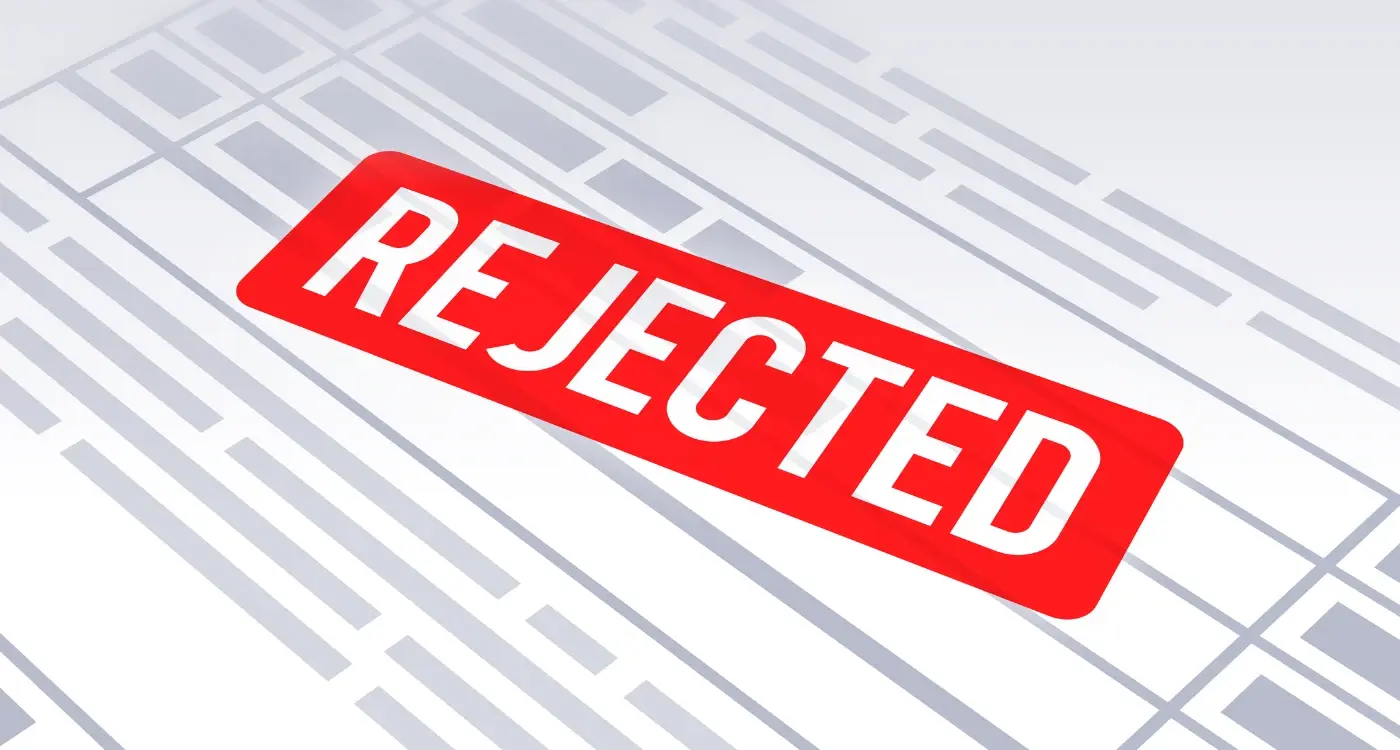What Should I Do When My App Launch Fails?
What do you do when the app you've poured your heart, soul, and probably your entire budget into falls flat on its face? I've been there—watching download numbers that barely register, user reviews that sting, and the crushing realisation that your big launch has turned into a spectacular flop. It's honestly one of the worst feelings in the mobile app world, but here's what I've learned after years in this industry: a failed launch doesn't mean your app is doomed.
The thing about app launches is that they're bloody unpredictable. You can do everything right—great design, solid functionality, decent marketing budget—and still end up with crickets. I've seen apps with million-pound backing sink without a trace, while others that launched with zero fanfare somehow found their audience months later. The mobile app market is ruthless like that; it doesn't care about your timeline or expectations.
A failed launch is not a failed app—it's just the wrong introduction to the right idea
But here's the reality check: most successful apps didn't actually succeed on their first try. They pivoted, they learned, they came back stronger. Instagram started as a location-based app called Burbn—not exactly the photo-sharing giant we know today, right? The difference between apps that eventually make it and those that don't isn't the quality of their first launch; it's what happens after that launch fails. Recovery is absolutely possible, but it requires a completely different mindset than the one that got you to launch day in the first place.
Accepting the Reality of Launch Failure
Right, let's get the uncomfortable bit out of the way first—your app launch didn't go as planned. Maybe you got fifty downloads instead of five thousand, or perhaps the reviews are making you want to hide under a rock. I've been there, and honestly, it stings every single time.
But here's the thing that took me years to properly understand: most app launches fail. Not just yours, not just the ones you hear about—most of them. We're talking about roughly 80% of apps that never gain meaningful traction after their initial launch. It's not because the developers are rubbish or the ideas are terrible; its simply because launching a successful app is bloody difficult.
The hardest part? Admitting that your launch hasn't worked. I've seen brilliant developers spend months convincing themselves that things will turn around naturally, that word-of-mouth will kick in, that the downloads will start flooding in next week. They won't. And that's actually okay.
Why Accepting Failure is Your First Step Forward
When you stop making excuses and face the numbers head-on, something interesting happens—you can finally start fixing things. You see, launch failure isn't the end of your app's story; it's often just the beginning of the real work. Some of the most successful apps I've worked on had terrible initial launches.
The key signs your launch needs addressing:
- Download numbers significantly below your projections
- Poor user retention rates (less than 20% after day one)
- Negative reviews highlighting the same issues repeatedly
- Low engagement metrics across all user touchpoints
- Minimal organic growth or word-of-mouth referrals
Once you acknowledge these realities, you can channel that disappointment into something productive. The apps that succeed after failed launches are the ones whose teams said "right, what do we need to fix?" instead of "why don't people understand our vision?"
Understanding Why App Launches Fail
Right, let's be honest about this—app launches fail for all sorts of reasons, and after eight years in this business I've seen pretty much every mistake you can make. The thing is, most app failures aren't down to bad luck or poor timing; they're usually the result of problems that could have been avoided with better planning and research.
The biggest killer? Not understanding your users properly. I can't tell you how many times I've worked with clients who've built apps based on what they think people want rather than what people actually need. They skip the user research, ignore market validation, and wonder why their "perfect" app gets downloaded five times in the first week. It's mad really, but it happens constantly.
Technical problems are another massive issue—apps that crash on launch, take forever to load, or simply don't work on certain devices. Users these days have zero patience for buggy apps; they'll delete yours and move on to a competitor faster than you can say "software update." And honestly, can you blame them?
Launch your app to a small test group first, not the entire world. This gives you a chance to catch problems before they damage your reputation permanently.
Marketing failures are just as deadly as technical ones. Too many apps launch with no proper marketing strategy, expecting the App Store algorithms to magically deliver thousands of users. But here's the thing—discovery is harder than ever, and without a solid plan for getting noticed, your app will disappear into the void with millions of others.
Common Launch Failure Categories
- Poor market research and user validation
- Technical issues like crashes or slow performance
- Inadequate marketing and user acquisition strategy
- Pricing problems or confusing monetisation models
- Bad timing or launching during competitor activity
- Insufficient app store optimisation
- Weak onboarding that confuses new users
The good news? Most of these problems can be fixed if you're willing to put in the work. Failed launches aren't death sentences—they're expensive learning experiences that can lead to much stronger second attempts.
Right, so your app launch didn't go as planned. It happens to the best of us—honestly, I've seen brilliant apps stumble out the gate more times than I care to count. The key now is figuring out exactly what went sideways so you can fix it.
First things first, let's look at your numbers without any sugar-coating. How many downloads did you actually get versus what you expected? What's your day-one retention rate looking like? Are people opening the app and immediately deleting it, or are they not finding it at all? These metrics will tell you whether you have a discovery problem or a product problem—and trust me, the solutions are completely different.
User Feedback and App Store Reviews
Your app store reviews are going to be brutally honest, but they're gold dust for understanding what went wrong. Don't just look at the star ratings; read every single review, especially the one and two-star ones. Users will tell you exactly why they're frustrated, what features they expected but couldn't find, and what made them give up.
I always tell my clients to screenshot these reviews—even the harsh ones—because they're your roadmap to improvement. If multiple people are saying the app is confusing to navigate, that's not bad luck, thats a design problem you need to address.
Technical Performance Issues
Check your crash reports and loading times next. Nothing kills an app faster than poor performance. If your app takes more than three seconds to load or crashes during the onboarding process, you've lost users before they even see what you've built. Analytics tools will show you exactly where people are dropping off, which screens are causing problems, and what devices are struggling with your app.
Creating Your Recovery Action Plan
Right, so you've done the hard work of figuring out what went wrong—now its time to actually do something about it. This is where most people get stuck, honestly. They analyse everything to death but never actually create a proper plan to fix things. Don't be one of those people.
Your recovery action plan needs to be specific and realistic. I mean really specific. None of this "improve user experience" nonsense. What exactly are you going to improve? Which screens? Which features? By when? You need dates, responsibilities, and measurable outcomes or you're just making a wishlist.
Setting Your Recovery Timeline
Here's the thing about app recovery—it takes longer than you think it will. I've seen too many teams rush back to market with half-baked fixes because they're panicking about lost time and money. Bad idea. Your second chance needs to be your best chance, not your fastest chance.
Break your plan into phases. Phase one might be fixing the most serious technical issues and gathering more user feedback. Phase two could be rebuilding key features that didn't work properly. Phase three? That's your relaunch preparation. Each phase should have clear goals and success metrics.
The best recovery plans focus on solving one major problem really well rather than trying to fix everything at once
Remember to be honest about your resources too. If you spent your entire budget on the first launch, you need a plan that works within whatever constraints you're facing now. Sometimes that means scaling back your ambitions, and that's perfectly fine. A smaller, working app beats a broken ambitious one every single time.
Rebuilding User Trust and Interest
Right, so your app launch didn't go to plan and now you're faced with the challenge of winning back users who might have had a disappointing first experience. It's a tough spot to be in, but honestly? I've seen plenty of apps recover from rocky starts—sometimes they end up stronger because of it.
The first thing you need to understand is that rebuilding trust takes time. Users who downloaded your app and had a poor experience won't just forget about it overnight. You need to give them compelling reasons to give you another chance, and that starts with being completely transparent about what went wrong and what you've done to fix it.
Winning Back Your Existing Users
Your existing users—the ones who downloaded but possibly deleted your app—are actually your best bet for a comeback. They showed initial interest, which means they saw value in your concept. The key is reaching them with updates that show real improvement.
Push notifications can work here, but only if users haven't completely uninstalled. Email is often more reliable. Send a personal message acknowledging the issues and highlighting the specific improvements you've made. Don't just say "we've made improvements"—be specific about what's changed and why it matters to them.
Attracting Fresh Users
New users don't carry the baggage of your failed launch, but they might have heard about it through reviews or word of mouth. This is where your improved app store presence becomes vital. Fresh screenshots, updated descriptions, and hopefully some positive reviews from your recovery efforts will help.
- Update your app store screenshots to showcase new features and improvements
- Respond to negative reviews explaining how you've addressed their concerns
- Ask satisfied beta testers to leave honest reviews after your improvements
- Share behind-the-scenes content showing your development process and commitment to quality
- Consider offering incentives for users to try the improved version
The rebuild phase is actually where you can establish a stronger foundation than apps that had smooth launches. Users who see you respond well to failure often become your most loyal advocates.
Improving Your App Based on Feedback
Right, so you've gathered all this feedback from your failed launch—now what? This is where the rubber meets the road, honestly. I've seen too many developers collect feedback and then ignore half of it because it doesn't match their original vision. But here's the thing: your users are telling you exactly what they need, and listening to them is probably the most important thing you can do right now.
Start with the feedback that keeps coming up again and again. If twenty people mention that your onboarding process is confusing, that's not a coincidence—that's a clear signal. I always tell my clients to look for patterns rather than getting caught up in individual complaints. One person saying your app is "too complicated" might just be having a bad day; but when it's mentioned repeatedly? That's actionable data.
Prioritising Changes That Actually Matter
You can't fix everything at once, and trying to do so will probably make things worse. Focus on the issues that directly impact your core functionality first. If people can't complete your main user journey because of a bug or design flaw, that takes priority over nice-to-have features they've requested.
I've learned that users are brilliant at identifying problems but terrible at suggesting solutions. They'll tell you "this doesn't work" but their idea of how to fix it might not be the right approach. That's where your expertise comes in—take their problem identification seriously, but use your technical knowledge to find the best solution.
Create a simple feedback tracking system where you can see which issues appear most frequently. A basic spreadsheet works fine—you don't need fancy tools at this stage.
Testing Changes Before Rolling Them Out
Once you've made improvements, don't just push them live and hope for the best. Test them with a small group first, preferably including some of the people who gave you the original feedback. This gives you a chance to verify that your changes actually solve the problems without creating new ones.
Relaunching Your App the Right Way
Right, so you've done the hard work—you've figured out what went wrong, rebuilt your app, and now you're ready to give it another shot. But here's the thing: a relaunch isn't just pressing the "publish" button again and hoping for the best. It needs to feel like a proper event, something worth paying attention to.
First thing you need to decide is whether this is going to be a soft relaunch or a full-blown "we're back and better than ever" campaign. If your original launch was a complete disaster with negative reviews everywhere, you might want to consider the soft approach—quietly releasing your improvements and letting word of mouth do its work. But if you've made significant changes and you're confident in your product now? Go big.
Timing Your Comeback
Don't rush this bit. I've seen too many developers get excited about their fixes and push out a relaunch the moment they think they're ready. Give yourself at least a month between your last major update and your relaunch campaign. This gives your existing users time to experience the improvements and hopefully leave better reviews; it also lets you gather more feedback to make sure you've actually fixed the problems.
Building Anticipation
Start talking about your comeback before you do it. Social media posts about what you've learned, sneak peeks of new features, maybe even a "coming soon" landing page if you're feeling ambitious. The key is being honest about what went wrong while focusing on what's better now. People love a good redemption story, and if you handle this right, your relaunch can actually generate more interest than your original launch did.
Preventing Future Launch Problems
Right, let's talk about stopping this mess from happening again. Because honestly? Going through one failed launch is quite enough for anyone—you don't want to make it a habit.
The biggest mistake I see is people rushing straight back into launch mode without fixing their process. They patch up the obvious problems, cross their fingers, and hope for the best. That's not a strategy; that's just wishful thinking.
Build Better Launch Habits
Start with proper beta testing—and I mean proper testing, not just getting your mates to download it and say "yeah, it's alright." You need real users who don't know you, who'll actually use your app the way normal people do. Give them tasks to complete and watch where they get stuck.
Test your app store listings too. Try different screenshots, descriptions, even app names if you can. What looks good to you might be completely confusing to potential users. I've seen apps fail simply because nobody understood what they actually did from the store listing.
Create Your Launch Checklist
Make a proper checklist of everything that needs to happen before launch day. Server capacity, customer support ready, marketing materials prepared, app store optimisation done, analytics tracking working—all of it. Then actually use the bloody thing next time.
Every failed launch teaches you something that no amount of planning can. The key is making sure you only need to learn each lesson once.
Set up monitoring systems that alert you when things go wrong. App crashes, server issues, user complaints—you want to know about problems before they become disasters. Because they will happen again, but next time you'll be ready for them.
Conclusion
App launch failures aren't the end of the world—honestly, they're more common than you might think. I've seen plenty of clients bounce back from disappointing launches to build genuinely successful apps. The key is treating that initial failure as expensive market research rather than a death sentence for your idea.
What separates the apps that recover from those that don't? Its usually the founders willingness to listen, adapt, and keep going when things get tough. Sure, it stings when you've poured months of work and thousands of pounds into something that doesn't immediately take off. But the data you collect from a failed launch is incredibly valuable if you know how to use it properly.
The mobile app market is unforgiving, but it also rewards persistence and smart iteration. Every piece of user feedback, every analytics insight, every painful lesson about what doesn't work—these all become building blocks for your comeback. I've watched apps go from 50 downloads in their first month to hundreds of thousands after a thoughtful relaunch that addressed the real problems users were facing.
Remember that even the biggest apps today had their struggles early on. The difference between success and failure often comes down to how quickly you can identify what went wrong and how willing you are to make the necessary changes. Your first launch might have failed, but your second one doesn't have to. Actually, it probably won't if you've done the work properly this time around.
Share this
Subscribe To Our Learning Centre
You May Also Like
These Related Guides

What Happens When You Launch An App Without Proper Testing?

What Happens When Your Business App Gets Hacked?



